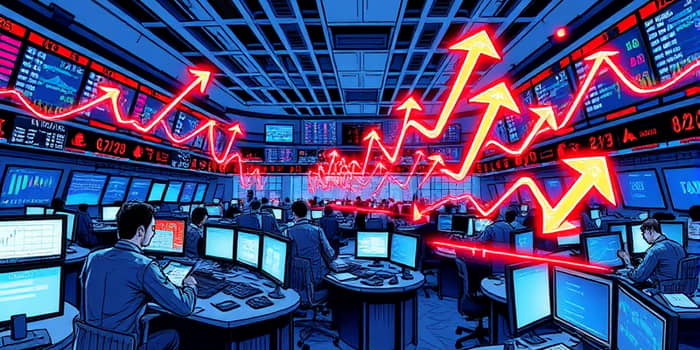
The stock market can be intimidating for newcomers, but mastering instruction to buy or sell immediately is essential for timely execution. Market orders form the backbone of rapid trading, allowing investors to enter or exit positions without delay.
A market order is a directive to purchase or liquidate a security at the best available current price. Its main purpose is rapid execution, though the exact fill price can vary, especially in volatile environments.
When you submit a market order, your brokerage routes it to an exchange where it matches with the best bid (for sells) or ask (for buys). However, the final trade price may differ from the last traded price due to ongoing supply and demand shifts.
Although market orders emphasize speed, other order types prioritize price certainty or conditional execution:
Limit orders only fill at your set price or better, while stop orders transform into market orders once a trigger price is reached. Stop-limit orders add an extra layer by imposing both a trigger and a price cap.
Market orders excel when execution speed is paramount and liquidity is ample. They are particularly effective for highly liquid blue-chip stocks or major exchange-traded funds, where tight bid-ask spreads keep execution prices close to expectations.
Conversely, market orders are riskier for thinly traded securities or during pre-market and after-hours sessions, where wider spreads and sudden news can cause next open price to differ sharply.
Stock exchanges operate on the continuous interaction of bid and ask orders, providing liquidity and enabling price discovery. Market orders serve as the driving force behind trades, swiftly matching with existing orders to maintain orderly flow.
External factors—economic releases, earnings announcements, geopolitical events—can rapidly shift supply and demand. In these moments, price uncertainty and slippage become critical considerations for traders relying on market orders.
At the core of every exchange lies the order book, listing current bid and ask prices across multiple levels. When a market order hits the book, it consumes liquidity from the best available price level first, then moves on if your order size exceeds that level.
This process, known as slippage, can push execution prices away from initial quotes. Large market orders in low-volume stocks may traverse several price tiers, potentially raising your average purchase price or lowering your sale proceeds.
The primary downside of market orders is unpredictable execution prices in volatile markets. Large orders or rapid price swings can deepen slippage. Overnight events, earnings surprises, or geopolitical shocks may create significant gaps between closing and next opening prices.
Traders must also consider transaction fees and potential hidden costs. In illiquid markets, the difference between quoted and actual execution prices can outweigh any perceived benefit of instant fills.
Smart traders deploy market orders selectively, balancing the need for speed against the desire for price control. When immediate entry or exit is critical—such as reacting to breaking news—market orders can be invaluable.
Imagine ordering 1,000 shares of a stock quoted at a $10 ask. If only 500 shares are available at that level, the remaining 500 might fill at $10.05 or $10.10. Your weighted average price climbs, illustrating how large orders can span multiple price levels and increase overall cost.
Numerous variables shape how well your market orders perform: overall market volatility, bid-ask spread width, trading volume, after-hours trading sessions, and sudden corporate news. Awareness of these factors empowers traders to anticipate potential slippage and adjust strategies accordingly.
Understanding the differences between order types is crucial for aligning trades with your risk tolerance and investment goals. While market orders guarantee speed, they sacrifice price certainty. Evaluate each trade’s urgency, liquidity context, and volatility before selecting your order type.
By integrating market orders wisely—complemented by limit or stop orders, order modifiers, and careful position sizing—you can navigate stock markets with greater confidence and precision.
Market orders are powerful tools for rapid execution, but they require nuanced application. By appreciating their mechanics, risks, and strategic uses, you’ll make more informed decisions and optimize your trading outcomes in the ever-evolving world of equities.
References













